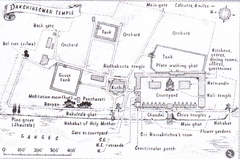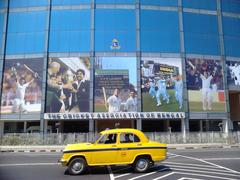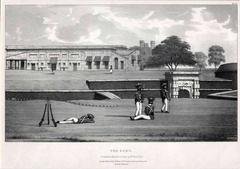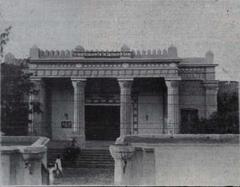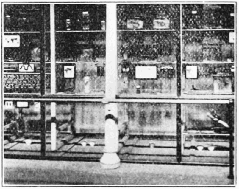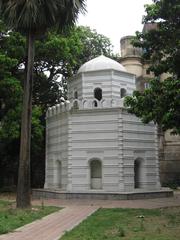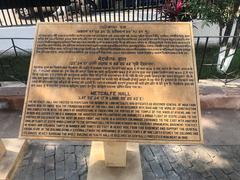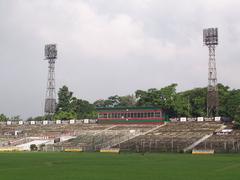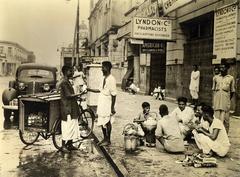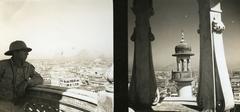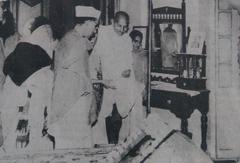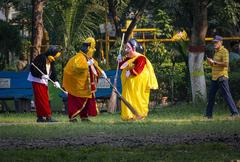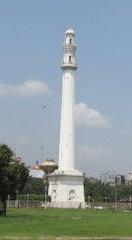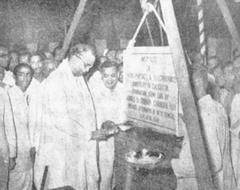Birla Mandir Kolkata Visiting Hours and Tickets
Date: 17/07/2024
Introduction
The Birla Mandir in Kolkata stands as a magnificent testament to India’s rich spiritual heritage and architectural ingenuity. This stunning white marble temple, dedicated to Lord Krishna and Radha, is not just a place of worship but a prominent cultural landmark that seamlessly blends traditional and modern architectural styles. Built by the renowned Birla family, industrialists and philanthropists known for their contributions to India’s spiritual and social fabric, the temple was consecrated in 1976 after two decades of meticulous construction. The Birla Mandir is a beacon of national unity and interfaith harmony, attracting thousands of devotees and tourists who come to marvel at its intricate carvings, expansive courtyards, and serene gardens. This guide will delve into the temple’s history, architectural grandeur, and visitor information, providing a comprehensive overview for anyone planning to explore this spiritual oasis in the heart of Kolkata (source).
Table of Contents
- Introduction
- History and Architectural Style of Kolkata’s Birla Mandir
- Visitor Information
- Special Events and Guided Tours
- Photographic Spots
- FAQ
- Conclusion
History and Architectural Style of Kolkata’s Birla Mandir
A Legacy of Faith and Philanthropy
The Birla family, renowned industrialists and philanthropists, are credited with building a series of temples across India during the 20th century. These temples, known as Birla Mandirs, are not merely places of worship but also symbols of national unity and interfaith harmony. The Birla Mandir in Kolkata, consecrated in 1976 after two decades of construction, is a prime example of this vision.
Architectural Grandeur - A Fusion of Styles
The temple’s architecture is a captivating blend of traditional and modern influences, drawing inspiration from several prominent styles:
- Traditional Odisha Architecture: The temple’s overall structure, particularly the towering vimana (temple tower) soaring to a height of 162 feet, harks back to the majestic temples of Odisha, particularly the Jagannath Temple in Puri. The intricate carvings adorning the vimana further accentuate this influence.
- Nagara Style: Elements of the Nagara style, prevalent in North Indian temple architecture, are evident in the temple’s curvilinear shikhara (tower) and the ornate balconies.
- Mughal Influences: The temple’s expansive courtyards and gardens, along with the use of delicate jaali work (lattice screens) in some sections, subtly hint at Mughal architectural influences.
A Symphony in White Marble
The temple’s most striking feature is its pristine white marble construction. Sourced from Rajasthan, the marble lends an ethereal glow to the structure, especially when illuminated at night. The use of white marble, a departure from the traditional red sandstone of older temples, symbolizes purity and peace.
Intricate Carvings and Sculptures
The temple’s exterior and interior walls are adorned with intricate carvings depicting scenes from Hindu mythology, particularly the life and teachings of Lord Krishna. These carvings, executed with remarkable skill and precision, showcase the mastery of Indian artisans.
A Spiritual Oasis in the Heart of the City
Beyond its architectural splendor, the Birla Mandir serves as a serene spiritual retreat amidst the bustling city. The temple complex encompasses sprawling gardens, providing a tranquil space for meditation and reflection. The atmosphere is imbued with a sense of peace and devotion, attracting devotees and visitors alike.
Key Architectural Features
- The Vimana: The towering vimana, the most prominent feature of the temple, is a testament to Odisha’s architectural legacy. Its intricate carvings and soaring height make it a sight to behold.
- The Garbhagriha: The temple’s sanctum sanctorum, the garbhagriha, houses the idols of Lord Krishna and Radha. This sacred space is characterized by its simple elegance and spiritual aura.
- The Sabha Mandap: The main prayer hall, known as the sabha mandap, is a vast space designed to accommodate a large number of devotees. Its high ceilings and ornate pillars create a sense of grandeur.
- The Gardens: The sprawling gardens surrounding the temple provide a peaceful respite from the city’s hustle and bustle. These meticulously maintained gardens feature a variety of plants and flowers, adding to the temple’s aesthetic appeal.
Visitor Information
Visiting Hours and Tickets
The Birla Mandir is open to visitors from 5:30 AM to 11:00 AM and from 4:30 PM to 9:00 PM. There is no entry fee, making it accessible to all.
Travel Tips
The best time to visit the temple is during the early morning or late evening hours to avoid the daytime heat and crowds. The temple is located on Ashutosh Chowdhury Avenue, and it is easily accessible by taxi or public transport.
Nearby Attractions
While visiting Birla Mandir, you might also want to explore nearby attractions such as the Victoria Memorial, St. Paul’s Cathedral, and the Indian Museum, which are all within a short distance.
Accessibility
The temple is equipped with ramps and other facilities to ensure accessibility for differently-abled visitors.
Special Events and Guided Tours
The Birla Mandir often hosts special events during major Hindu festivals like Janmashtami and Diwali. Guided tours are available upon request, offering deeper insights into the temple’s history and architecture.
Photographic Spots
For photography enthusiasts, the best spots include the front view of the temple, the intricately carved vimana, and the serene gardens. Evening illuminations provide an excellent opportunity for captivating night shots.
FAQ
Q: What are the visiting hours for Birla Mandir in Kolkata?
A: The temple is open from 5:30 AM to 11:00 AM and from 4:30 PM to 9:00 PM.
Q: Is there an entry fee for Birla Mandir?
A: No, entry to the temple is free for all visitors.
Q: Are photography and videography allowed inside the temple?
A: Photography is permitted in the temple’s outer areas and gardens but is restricted inside the sanctum sanctorum.
Q: How can I reach Birla Mandir?
A: The temple is located on Ashutosh Chowdhury Avenue and is easily accessible by taxi or public transport.
Conclusion
The Birla Mandir in Kolkata is not just a place of worship but a cultural landmark that embodies India’s rich architectural heritage and spiritual ethos. Its unique blend of architectural styles, intricate carvings, and serene ambiance offers a truly enriching experience for visitors. Make sure to plan your visit and immerse yourself in this spiritual oasis.
References
- Birla Mandir Kolkata - History, Architectural Style, Visiting Hours, and Tickets. Retrieved from Victoria Memorial
- Discovering Birla Mandir in Kolkata - A Guide to Its Religious Significance, Architecture, and Visitor Information. Retrieved from St. Paul’s Cathedral
- Visiting Birla Mandir in Kolkata - Hours, Tickets, Nearby Attractions & More. Retrieved from Indian Museum




